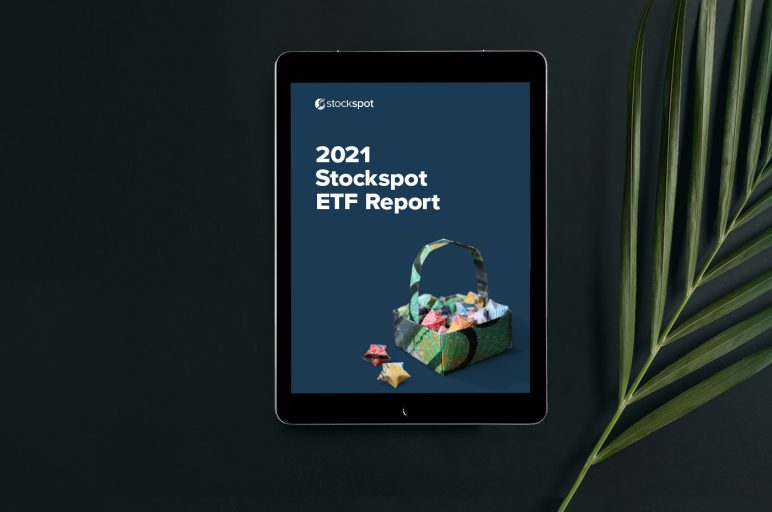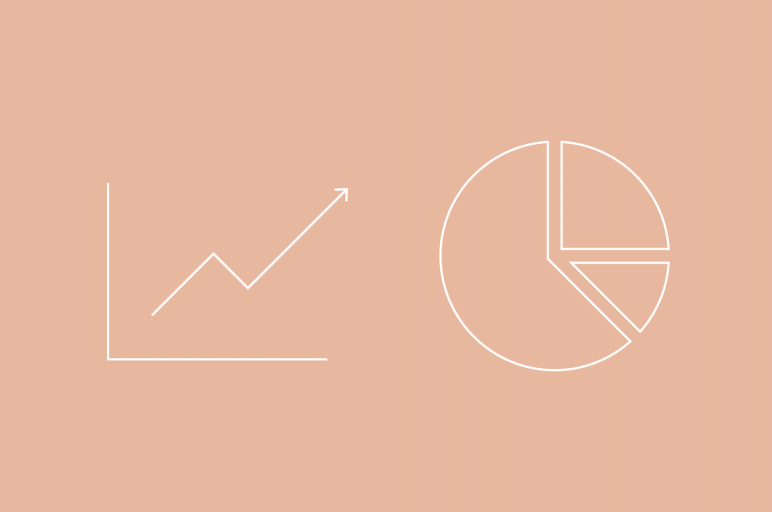Stockspot has been researching ETFs and managing diversified ETF portfolios for clients since 2014. We are ETF advocates because ETFs offer instant diversification, low costs, transparency, and ease of access.
Our 2022 ETF Report compares more than 250 ASX and Cboe ETFs and looks at how Australians are investing in them. Here are 10 key research highlights.
1. Australians made nearly $10 billion profit by investing in ETFs over the past year
The ETF market in Australia grew 32% over the last year and is currently worth approximately $135 billion, with 35 new ETF launches. This takes the total number of products available in Australia to 266.
The Vanguard Australian Shares Index ETF (VAS) and iShares S&P 500 ETF (IVV), which are both in the Stockspot Portfolios, were the two ETFs that made investors the most amount of money ($1.4 billion and $800 million) respectively.
2. Investors poured in the highest amount of money into ETFs ever
ETFs are becoming the most popular way for Australians to invest. Many investors are turning to ETFs replacing their traditional active managed funds and LICs due to erratic performance and high fees.
Australian investors poured in $23 billion into ETFs over the past year, the highest yearly flow on record.
3. Savvy investors are shunning high fees
Most investor money is still going into low-cost ETF products with close to half of the ETF flows going into ETFs charging under 0.25% per year.Investors are attracted to lower costs and better returns. Expensive ETFs often relate to active fund managers or complex underlying strategies that include leverage, synthetic instruments, and inverse products. These come with higher risks and paradoxically, inferior returns.
The median return of expensive ETFs produced a negative return over the last five years, compared to the low-cost ETFs which have performed the best, producing a return of over 10% p.a.
| ETF Fee Tier | Number of ETFs | Median Five-Year Returns (p.a.) |
| Less than 0.25% | 47 | 10.2% |
| 0.25% to 0.49% | 95 | 8.7% |
| 0.50% to 0.74% | 65 | 7.2% |
| 0.75% to 0.99% | 32 | 7.3% |
| 1% and over | 27 | -4.6% |
4. Index ETFs have distributed most of the gross returns made to investors
Low cost ETF issuers like Vanguard and SPDR fees reflect approximately 2-3% of the ETF gross returns over the last year. Active fund managers like Magellan, K2 Asset Management, and Montgomery Investment Management can keep as much as 40% of the gross returns. This is one reason why we don’t recommend active funds to our clients.
5. The best-performing ETFs over the past five years are simple ETFs holding metals and tracking broad indexes
The BetaShares NASDAQ 100 ETF (NDQ) has been the best-performing ETF returning 23.7% per year. The BetaShares Global Sustainability Leaders ETF (ETHI) which we hold in our Sustainable Portfolios returned 19.8% per year.
6. Low cost broad ETFs are still the most popular
The Vanguard Australian Shares Index ETF (VAS) continues to be the most popular ETF for Australians in terms of size and flows. VAS increased its size by $3.2 billion over the past year, helped by $2.3 billion of net inflows. Other popular ETFs were all low-cost, broad market, tracking both Australian and global markets.
Despite the allure of short-term high returns from niche ETFs, we are seeing investors continuing to gravitate towards broad market ETFs which accounted for half of the flows over the last year.
7. Following trendy ETFs cost investors more than $100 million
There were 35 ETFs listed on the sharemarket in the past year. Many of these have been thematic ETFs that track a particular group of companies linked to a trend or niche sector.
Unfortunately, these trendy ETFs have lost Australian investors more than $100 million over the past year. ETF issuers can influence investors to chase past historical returns by launching a trendy ETF right at the peak of its interest, which normally attracts retail investor money.
| Launch date | ETF ticker | Name | Amount lost by investors (millions) |
| August 2021 | MHHT | Magellan High Conviction Trust (Managed Fund) | -$115 |
| November 2021 | CRYP | BetaShares Crypto Innovators ETF | -$59 |
| March 2021 | ERTH | BetaShares Climate Change Innovation ETF | -$28 |
| October 2021 | HGEN | ETFS Hydrogen ETF | -$19.7 |
| June 2021 | FIXD | Coolabah Active Composite Bond Fund (Hedge Fund) | -$14.4 |
| December 2021 | FDEM | Fidelity Global Demographics Fund (Managed Fund) | -$14.3 |
8. ETFs have helped regular Australian investors outperform expert fund managers
If you had invested $10,000 equally into the 10 most popular global share funds available to Australians over the last five years you would have $16,530 today. If you had instead invested all of that money into the global share ETF that we recommend to clients (IOO) you would today have $21,213.
Therefore you would have been 47% better off over the last five years investing in the simple index ETF.
9. The best offence is a good defence
Complementing your simple growth ETFs with defensive ETFs that hold bonds and gold can also help cushion market falls.
The winning recipe of owning simple ETFs including defensive assets has helped the Stockspot portfolios deliver eight consecutive years of positive returns.
10. ETFs are one of the fastest growing investment products in Australia
The ETF market continues to grow at a faster rate than other investment products, growing at three times the rate of LICs and eight times the rate of managed funds.
ETFs have grown four times faster than the broader Australian wealth management market (7% p.a.) showing that ETFs are capturing a growing share of investable assets in Australia.




